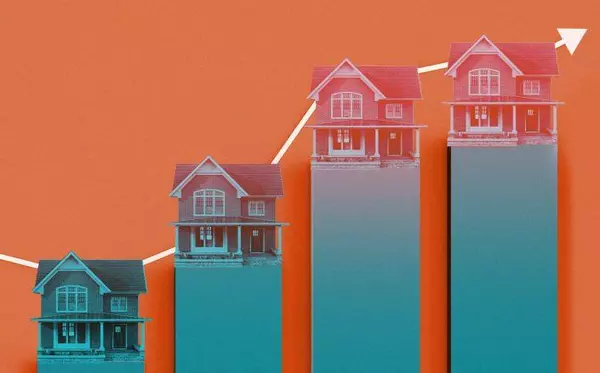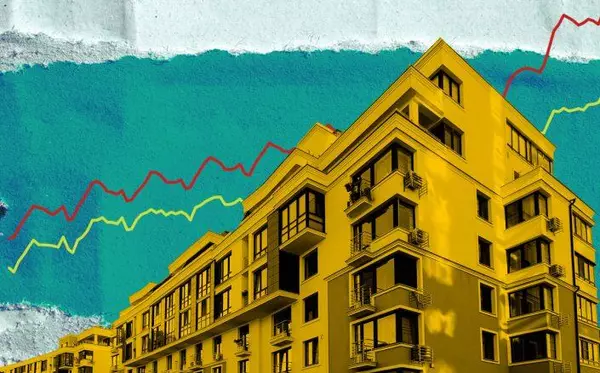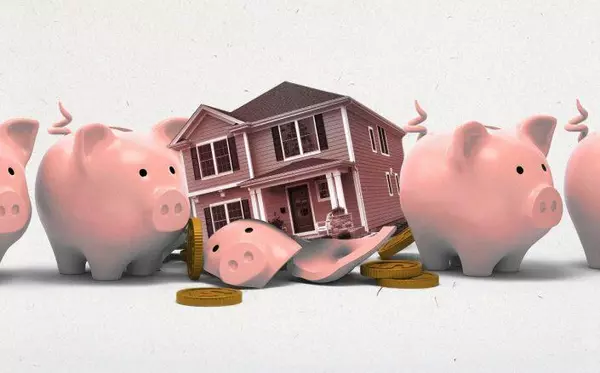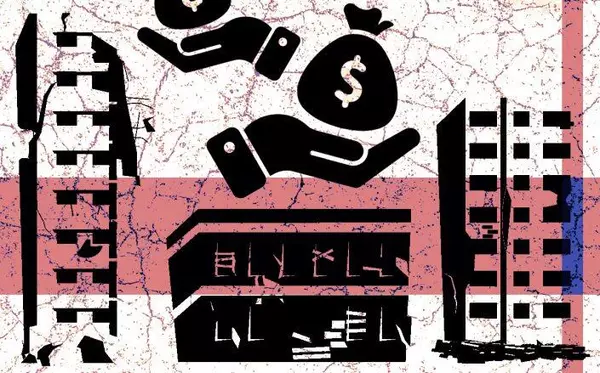
Mortgage rates surge, capping fastest rise since 1994
Mortgage rates last week jumped to their highest level in more than three years, which could bring the housing market frenzy to a close. The contract rate on a 30-year fixed-rate mortgage shot up to 4.8 percent in the week ended March 25 from 4.5 percent a week earlier, the Mortgage Bankers Association reported. That was the largest one-week increase since February 2011, and it brought mortgage rates to their highest level since December 2018. Rates have now climbed by nearly 1.5 percentage points since the start of the year, the most rapid increase since 1994. However, mortgage rates were at all-time lows a few months ago, and remain relatively low by historical standards. Rates have been steadily rising for the past few weeks. In its March 16 report, the MBA said the 30-year rose to 4.27 percent from 4.09 percent. The next week, it was up to 4.5 percent. Now, it’s 4.8 percent. That means at the beginning of a month, a borrower putting 20 percent down on a home costing $406,000 — the median price for a house — could expect to pay $1,959 monthly on a mortgage. Today, it would be $2,130. (The rates are for fixed-rate mortgages with conforming loan balances, meaning $647,200 or less. Rates for jumbo loans are traditionally higher, but at the moment are 40 basis points lower.) The industry is watching closely how buyers react to the rising rates. Some home shoppers accelerated their plans and increased their bids in an effort to close on a loan before rates went higher still. Higher rates mean higher monthly costs for borrowers, and figure to tamp down home prices eventually, but that hasn’t happened yet. “Even with the ongoing climb in rates, purchase application volumes were little changed lastweek,” said Mike Fratantoni, MBA senior vice president and chief economist. “This is particularly auspicious, as we are now in the beginning of the spring homebuying season, and those shopping for homes are struggling with not only higher and more volatile mortgage rates, but also an ongoing shortage of homes on the market.” But there are signs of change. Mortgage applications decreased 6.8 percent from one week earlier, probably because of rising mortgage rates and home prices and the paucity of listings. With rates rising, fewer owners are refinancing. The MBA’s refinance index decreased 15 percent from the previous week and was 60 percent lower than the same week one year ago. Only 40.6 percent of mortgage applications last week were for refinancing, down from 44.8 percent last week. The post Mortgage rates surge, capping fastest rise since 1994 appeared first on The Real Deal South Florida. (iStock / illustration by Ilya Hourie for The Real Deal)

Condo prices hit all-time high: Redfin
Americans who can no longer afford houses might now be priced out of condos, too. The typical U.S. condominium unit sold for a record $319,000 last month, or 14.6 percent more than a year ago, according to a new report from Redfin. The increase was caused in part by a shortage of listings for houses — whose median price is up to $406,000 — causing home shoppers to look at condos instead. The condo market is still not as cutthroat as that for detached homes. Nearly 75 percent of detached-home sales in February involved bidding wars, compared with just under 65 percent of condo sales. But condos have kept heating up as more buyers are priced out of the detached-home market. “The condo market has bounced back,” said Chance Glover, a Redfin manager in Boston. “People are no longer afraid to live downtown, close to the crowds — and they often prefer it, because they’re close to the office and all the amenities of the city. Rising prices are pushing single-family homes out of reach for a lot of buyers, so condos are affordable in comparison.” fell 28 percent over the past year, twice as much as for single-family homes, and 40 percent of condos are selling over their asking price. (It is a dramatic shift from the beginning of the pandemic, when remote work and other factors caused sales to drop 48 percent.) The median condo price in Miami rose to $383,000, an increase of nearly 33 percent year-over-year. Inventory fell by roughly 30 percent over the same period. Condo sales and prices rose in Broward and Palm Beach counties. In New York, the median condo price rose by 11 percent to $599,000. A recent pipeline report from Corcoran projected that condo development would lag in the coming years as a result of the pandemic hampering construction. Experts say that could keep the market tight for a while yet. The post Condo prices hit all-time high: Redfin appeared first on The Real Deal South Florida. (iStock/Illustration by Kevin Rebong for The Real Deal)

Miami tops list of most rent-burdened metros in the nation
The Miami metro area ranks as the most rent-burdened in the nation, according to a recently released report. Rents climbed after vaccine rollouts drove Americans’ return to cities, and now the average tenant is on the brink of being rent-burdened. A report by Realtor.com revealed that last month, tenants earning the median income in their metro areas were spending nearly 30 percent of their earnings on rent, up from 25 percent a year earlier. The federal government considers any tenant devoting more than 30 percent of income to housing rent-burdened. The average tenant in the 50 largest U.S. cities is now at that threshold. In 14 of those metro areas, tenants’ monthly rental expenditure has surpassed the 30 percent mark. Renters were hit hardest in the Miami metro area, which encompasses Fort Lauderdale and West Palm Beach. Tenants on average spent nearly 60 percent of their monthly income on rent, up from around 37 percent in February of 2021. Rents in the area have risen by 55 percent in the past year to $2,929 for a studio-to-two-bedroom apartment, according to the report. Tampa and Orlando also saw housing affordability drop. Rents in both areas have shot up by more than 30 percent in the past year. In Tampa, renters now put 44 percent of their earnings toward housing, and in Orlando, 36 percent. Los Angeles clocked in as the second-most rent-burdened market. Half of the average Angeleno’s income now goes to rent, up from 39 percent in February 2021. In New York, 40 percent of earnings go toward housing, compared to 36 percent in the same month last year. San Francisco rents have not bounced back as much. However, as of February, the average tenant is still rent-burdened, turning over about 30 percent of her income to a landlord. Some cities have enacted measures to help tenants cope with the soaring price of housing. As of last week, landlords in Miami-Dade must give tenants at least 60 days’ notice to raise the rent by 5 percent or more. The protection comes as some owners have reported 50 percent hikes. Tenant advocates in New York, meanwhile, are pushing for good cause eviction. The legislation would afford tenants who experience a rent increase of more than 3 percent or 1.5 times the regional inflation rate, whichever is higher, a defense against eviction. Landlords would have to justify the increase in court to proceed with an eviction for non-payment. For many tenants, the burden of rent comes as rising costs for goods and services have pushed inflation to a 40-year-high. Higher rents feed into the consumer price index, which measures inflation. The post Miami tops list of most rent-burdened metros in the nation appeared first on The Real Deal South Florida. (iStock / illustration by Ilya Hourie for The Real Deal)
Categories
Recent Posts










